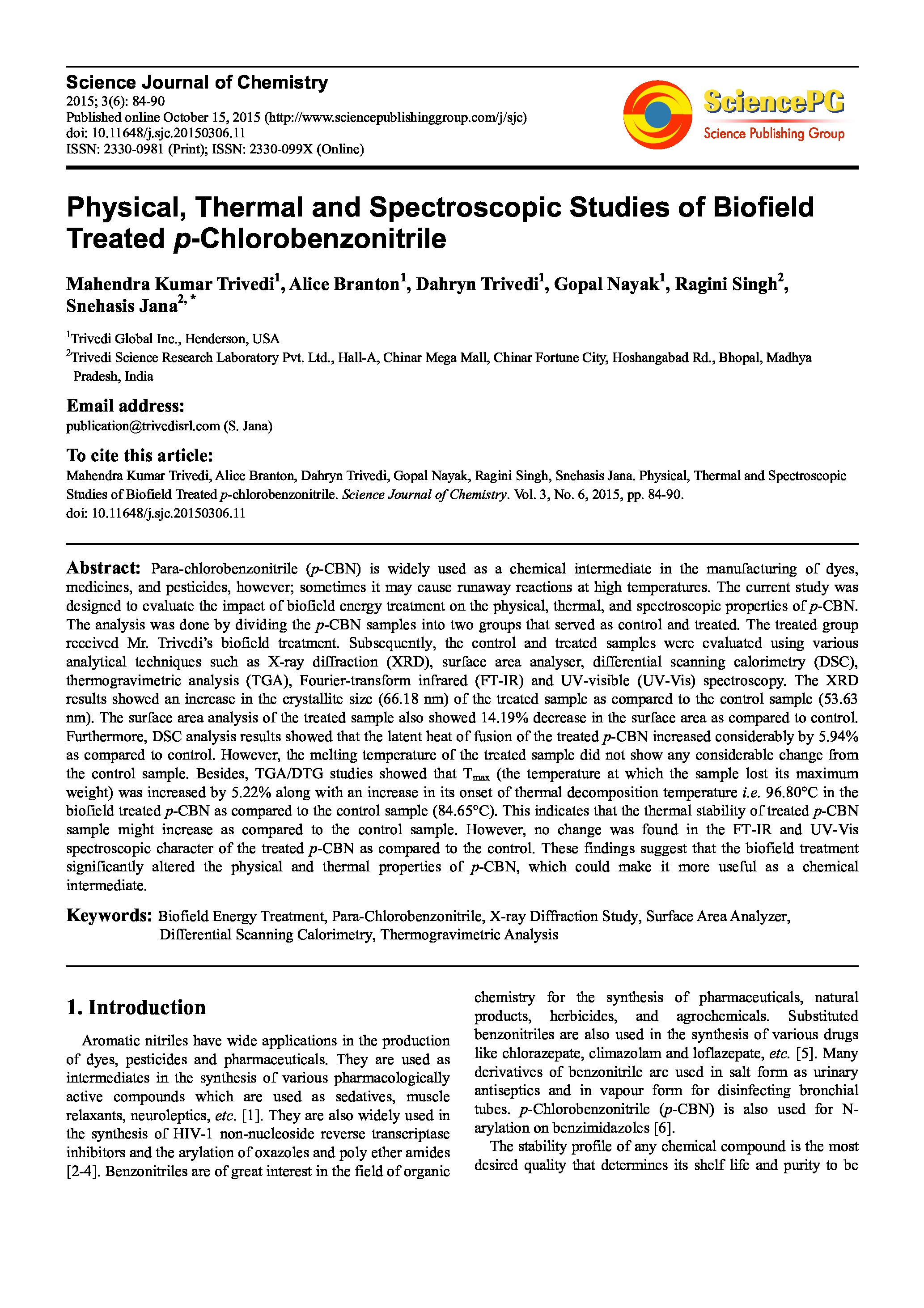Physical, Thermal and Spectroscopic Studies of Biofield Treated p-Chlorobenzonitrile
Affiliation
Trivedi Global Inc.; Trivedi Science Research Laboratory Pvt. Ltd.
Main category
Natural Sciences (Analytical Chemistry, Method Development (Chemistr)
Abstract
Para-chlorobenzonitrile (p-CBN) is widely used as a chemical intermediate in the manufacturing of dyes, medicines, and pesticides, however; sometimes it may cause runaway reactions at high temperatures. The current study was designed to evaluate the impact of biofield energy treatment on the physical, thermal, and spectroscopic properties of p-CBN. The analysis was done by dividing the p-CBN samples into two groups that served as control and treated. The treated group received Mr. Trivedi’s biofield treatment. Subsequently, the control and treated samples were evaluated using various analytical techniques such as X-ray diffraction (XRD), surface area analyser, differential scanning calorimetry (DSC), thermogravimetric analysis (TGA), Fourier-transform infrared (FT-IR) and UV-visible (UV-Vis) spectroscopy. The XRD results showed an increase in the crystallite size (66.18 nm) of the treated sample as compared to the control sample (53.63 nm). The surface area analysis of the treated sample also showed 14.19% decrease in the surface area as compared to control. Furthermore, DSC analysis results showed that the latent heat of fusion of the treated p-CBN increased considerably by 5.94% as compared to control. However, the melting temperature of the treated sample did not show any considerable change from the control sample. Besides, TGA/DTG studies showed that Tmax (the temperature at which the sample lost its maximum weight) was increased by 5.22% along with an increase in its onset of thermal decomposition temperature i.e. 96.80°C in the biofield treated p-CBN as compared to the control sample (84.65°C). This indicates that the thermal stability of treated p-CBN sample might increase as compared to the control sample. However, no change was found in the FT-IR and UV-Vis spectroscopic character of the treated p-CBN as compared to the control. These findings suggest that the biofield treatment significantly altered the physical and thermal properties of p-CBN, which could make it more useful as a chemical intermediate.
DOI
10.18147/smn.2016/paper:333
Do you have problems viewing the pdf-file? Download paper
here
If the paper contains inappropriate content, please
report the paper. You will be redirected to the landing page.
